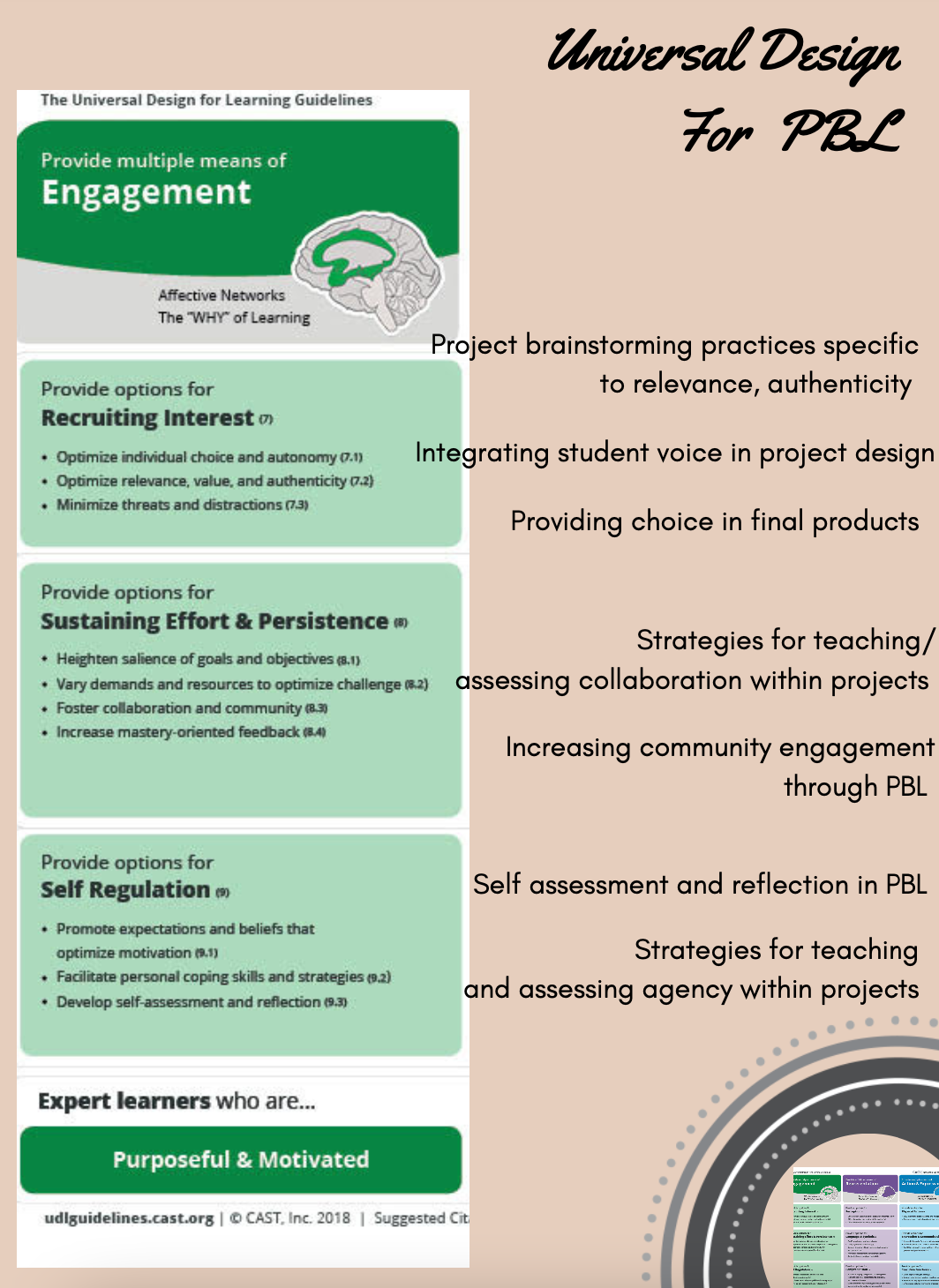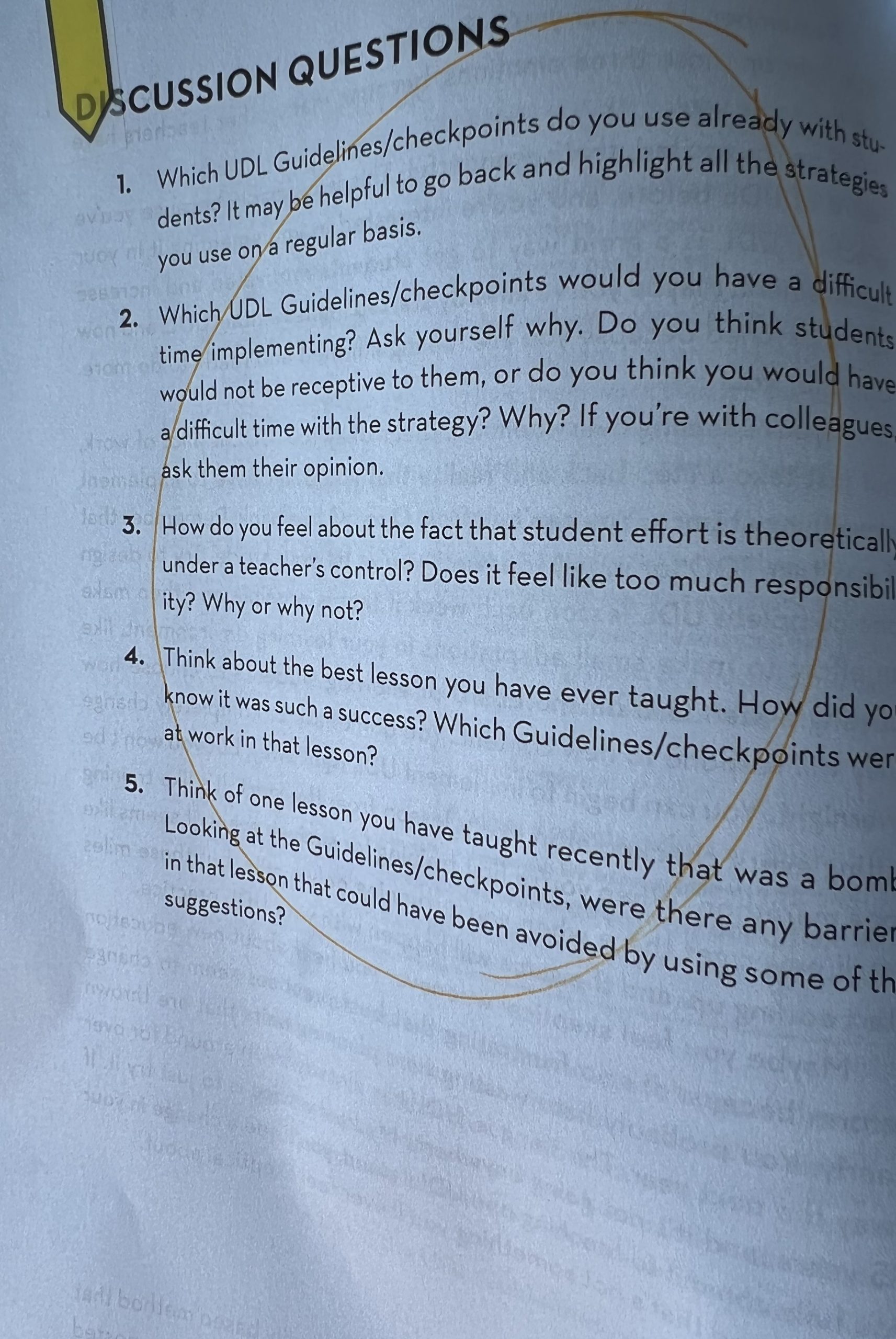Differentiation, UDL and PBL
I have been reflecting a bit on how to communicate the similarities and differences between PBL (Project Based Learning) and UDL (Universal Design for Learning)… I have concluded that there are more similarities than differences- see my attempted venn diagram below, in which I couldn’t find much that they didn’t have in common.
One distinguishing feature of UDL is the value placed on identifying its teaching practices as unique from what we have traditionally referred to as “differentiation”; rather UDL provides a framework for best practices that can potentially apply to ALL learners in a classroom. This to me feels pretty similar to the phrase we use in PBL: “voice and choice”. However, where it can get messy is when we veer from theoretical conversations and get into the practical teacher chatter of “so what does that actually look like?” The following are five concrete strategies that teachers can use when Universally Designing PBL (is that a thing to combine the two into one phrase?! I just did!):
Strategies for Universally Designing PBL
- Same product, different process. Think about how students can create the same final product for their project, but go about getting their following a variety of paths, based on their learning needs and styles. See page 43 in Keep it Real with PBL, Elementary for more!
- Plan ahead with a project calendar. Once you create your project calendar for daily teaching and learning, go back through your lessons and assignments to consider what modifications, accommodations and options you can provide as needed for project benchmarks. This is also a great opportunity to collaborate with colleagues to plan ahead for co-teaching. During project coaching this is typically the last step of project planning because we are drilling down into the final logistics for ALL learners.
- Offer 3-5 final product options. Allow students some choice in showing you what they have learned throughout the project by giving them several options to choose from in their final product. Want to include technology? See page 51 in Keep it Real with PBL, Elementary for more!
- Workshop it! In my PBL classroom I used the workshop method to teach new content and skills. After the mini lesson for the day students would have the opportunity to apply what they learned to the project. During project work time I would call students back one at a time to provide feedback and additional support. This allowed me to give every child what they needed-more help, more direction, additional challenge, etc. See page 96 in Keep it Real with PBL, Elementary for more!
- Have fun with it! Historically, differentiated instruction has been so “hush hush” but I think that by fostering student agency and teaching students how to know themselves as a learner opens up a classroom culture for honest dialogue about where everybody is in their learning and where they want to be. In my classroom I used to post on every assignment a “mild”, “medium”, and “spicy” option for students to explore. See page 78 in Keep it Real with PBL, Elementary for more!
Please do, but Caution!
While I love the idea of voice and choice, I have been known to provide some real talk for teachers on how this can cause total anarchy in the classroom if some guardrails aren’t placed on projects. More specifically, I worry that when we open things up too much for students, it can make assessment very challenging for teachers- and as a result teachers will avoid assessment all together, or assessments will lack best practices of formative and summative practices. So my parting thought is, if you are going to open up a project and design it for “the edges” (and yes, please do!) be sure that the options that are offered to students showcase the same content and skills so that you can use the same assessment tool to evaluate what they have learned.
Additional Resources for Differentiating PBL
- https://www.coursesbycrafted.com/differentiation
- https://my.pblworks.org/resource/blog/3_tips_for_increasing_access_to_gold_standard_pbl
- https://go.newsela.com/Making-PBL-Work-IRL-On-Demand-Content-b.html
- https://www.pblworks.org/blog/designing-edges-using-universal-design-learning-pbl#:~:text=However%2C%20I’ve%20recognized%20that,by%20removing%20barriers%20to%20learning
- This book is a great resource for UDL, and I also recommend these discussion questions from it!



